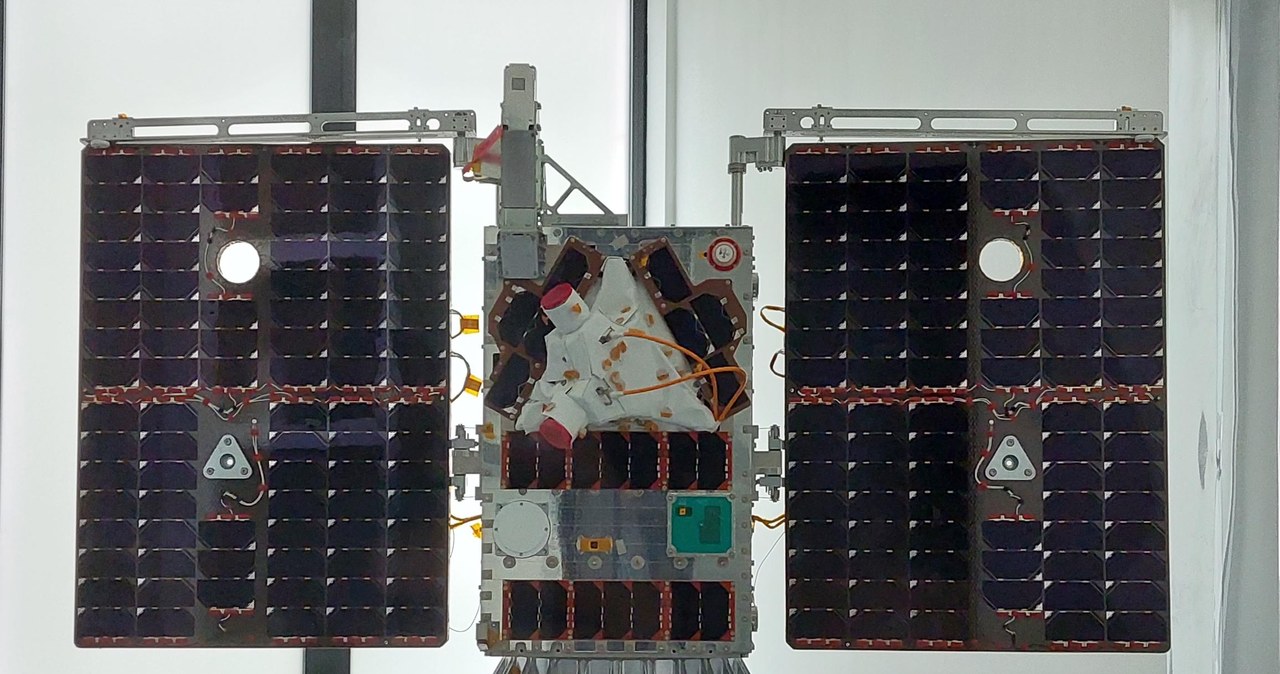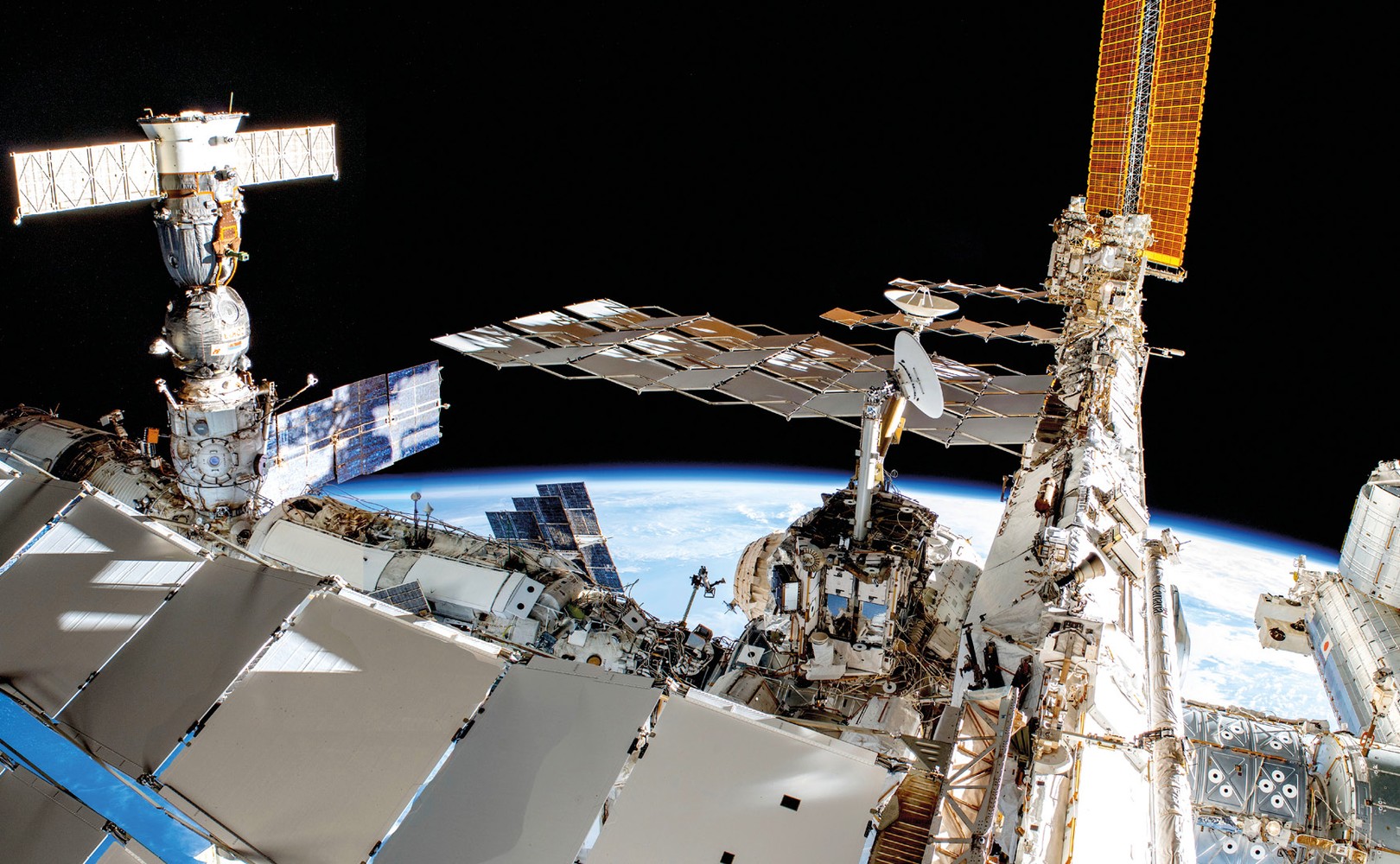Eagle Eye Developed by the Space Research Center of the Polish Academy of Sciences, Creotech Instruments (leader of the consortium) and Scanway, it is the first satellite designed and manufactured in Poland with a mass of 55 kg. She will soon be flying to the United States, as she is still in Warsaw for now, so I took the opportunity to go to the Creotech Instruments headquarters to see what she is like.
During my visit to the company's headquarters in Warsaw, I had the opportunity to see the satellite live before it flew into space. It's basically ready and just waiting for a signal from SpaceX, which is expected to give a specific date in the middle of this year. It is certain that the information will appear soon, because The Polish satellite still needs to fly abroad and arrive 45 days before the mission.
You cannot approach the satellite directly, but can be accessed behind glass doors. It was placed in the so-called Clean roomsAny room in which the air is constantly purified and which employees can enter only in special clothing. This is essential because minor contamination may cause the satellite not to work properly. It is located on a special rotary table (board), so when working on it there is no need to walk around it from several sides, just rotate it.
The Polish satellite will not fly into space alone. SpaceX also takes satellites from other countries. They will be arranged in a “Christmas tree”, that is, one above the other. Once the rocket reaches space, it will launch satellites in sequence. EagleEye will be launched at an altitude of about 500-550 km above the Earth's surface, then gradually descend to an altitude of 350 km. The whole team will expect something magical “Eagle eye detachment confirmed.”Which means that the satellite is in space. From now on, everything will be in the hands of the team. An hour later, it will contact Earth, specifically the mission command center located in Warsaw at the headquarters of Creotech Instruments.
Space is a very hostile place for satellites, and low orbit due to the presence of a residual atmosphere creates a number of challenges. EagleEye is equipped with a modern ion engine that will allow the satellite to remain in low orbit for the period required by the project, i.e. at least three years.
In orbit, the satellite will deploy solar panels with a total area (including side panels) of about 1 square meter. This square meter is capable of giving approximately 200 watts of generated energy. That's relatively little power on the scale of home photovoltaics, for example, but more than enough to power the satellite and charge its batteries, the company's project managers reported during the conference.
Communication is provided by two main radio systems. One system is used to transmit telemetry, i.e. information about the “health status” of the satellite, and to receive remote commands sent by the operator. The second radio system will be used only to transmit data from the satellite to Earth. Its transmission speed is comparable to home Internet transmission. In addition, there is a communications system designed by Creotech for telemetry and remote control, which will be tested and replaced in the future with the main system used in the satellite.
Of course, even though the entire team has thoroughly tested the satellite, there is always a risk that problems may arise. The first 24 hours will be crucialThe device will begin to connect to the ground, and then the team will verify that the power supply is working and that each subsystem is working, step by step, which could take at least a month. Only then will the telescope be launched, the first images taken and the necessary calibration carried out. Ultimately, the engine will be launched, which, although tested, will have to undergo tests with this particular satellite.
If something goes wrong, it does not mean that the entire mission will fail. EagleEye is very large, among other things: because all systems have backups, including software. When an item is damaged, its “replacement” will automatically take over these functions. The company emphasizes that even if there is no connection for 24 hours, contingency plans are being prepared that will guide operators step by step to obtain contact with the satellite.
EagleEye will be uploaded to Very low orbit (VLEO – Very Low Earth Orbit). Stosonkou Low altitude 300-350 km Will be allowed Accurate depiction of the Earth. But the main task will be to test the HyperSat platform and all the hardware (including the telescope) and software in the satellite.
A supercomputer operated by the Space Research Center of the Polish Academy of Sciences will also be installed on board the plane. Its computational power is to enable the launch of artificial intelligence algorithms, which will initially analyse, clarify and remove certain elements (such as cloud cover) in space in order to determine which images will be suitable to send to Earth. Once the telescope is launched and calibrated, it will be able to transmit images twice a day. But in the end it will not be used to take photos, it is a flying laboratory in which tests will be constantly carried out, including the introduction of new software.
Further tests will be conducted during descent to the target orbit. When the satellite descends to an altitude of 350 kilometers, it will remain there thanks to its engines. After five years, it will be released into the atmosphere where it will burn up, which means the end of this mission. However, the consortium leader announced that other missions were already planned. Financially, in the future, the most profitable will be commercial companies, whose task will be to place equipment of various companies into orbit, but the company also wants to engage in scientific projects. Thanks to Polish components, perhaps satellites, will fly to other parts of the solar system, and possibly to Beyond that.
We will definitely report on the launch of the Falcon 9 rocket with EagleEye on board in GeekWeek.

Echo Richards embodies a personality that is a delightful contradiction: a humble musicaholic who never brags about her expansive knowledge of both classic and contemporary tunes. Infuriatingly modest, one would never know from a mere conversation how deeply entrenched she is in the world of music. This passion seamlessly translates into her problem-solving skills, with Echo often drawing inspiration from melodies and rhythms. A voracious reader, she dives deep into literature, using stories to influence her own hardcore writing. Her spirited advocacy for alcohol isn’t about mere indulgence, but about celebrating life’s poignant moments.










